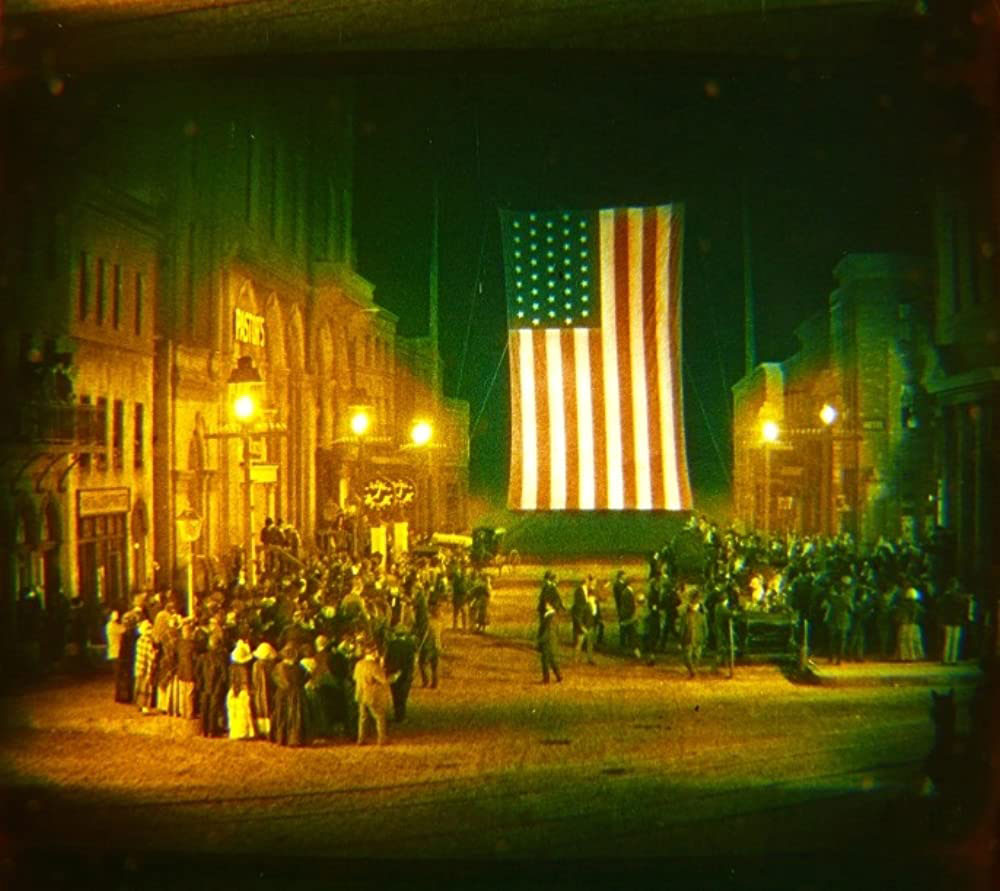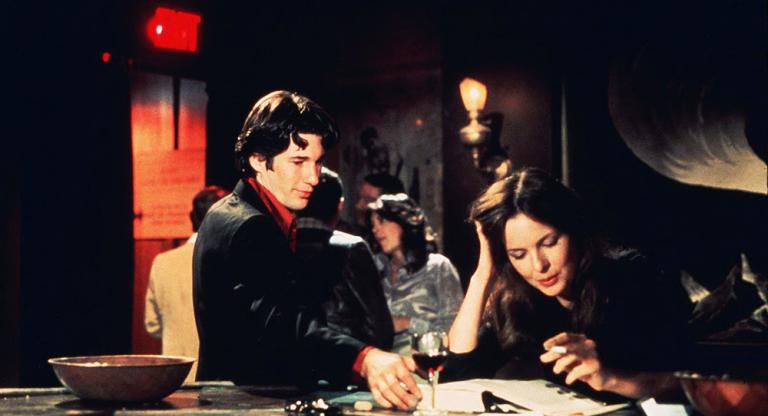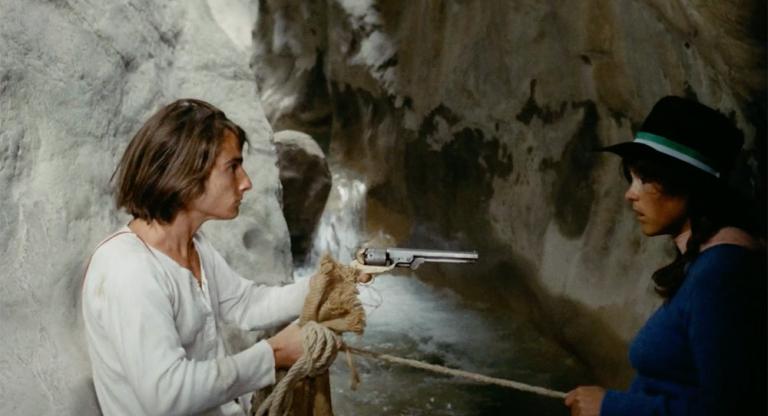By 1925, dual casting was already a familiar convention in the silent cinema, having long been used on the stage toward ends variously dramatic and economical. Marion Davies had played a host of reincarnated characters in Buried Treasure (1921) before taking on the roles of both Fely O'Tandy and Anne de Rhonde, twin sisters separated at birth, in Monta Bell's Lights of Old Broadway (1925). The film makes very little of this device (the coincidence is never so much as suspected), though Davies does share some screen time with herself by use of a body double and crafty blocking. Instead of mistaken identity, the story takes up a well-worn class-crossed-lovers premise, emphasizing the ethnic character of two 19th-century New York families: one old-money Dutch bankers and the other impoverished Irish immigrants.
The former reside on "fashionable Washington Square," and the latter in a shantytown on 5th Avenue and 69th Street, "before it was exclusive," the street names painted on roughly hewn wooden signposts amidst the only somewhat exaggeratedly rustic scene of upper Manhattan, circa 1880. An early sequence cuts between the relative opulence and squalor of mealtime in the respective households: Fely's father curses "gintlemen" and "aristocracks" in broguish intertitles while Anne's proves the Irishman's prejudice, plotting the eviction of the O’Tandys and others from the land on which they have been squatting.
The most significant intrigue resulting from Davies's twinning parts possesses the heart of the de Rhonde scion, Dirk. His instant attraction to Fely, a vaudeville dancer identical to his sister, is presented without comment. The roles are distinguished mostly by hairstyle: Anne's brunette ringlets falling limply beside her face; Fely's blonde locks barely contained beneath a series of elaborate hats and bonnets (and eventually furnishing a needful hairpin from within).
A riot breaks out in the street after the show during a parade of the Orangemen, an Irish Protestant fraternal order whose marches were often the occasion for sectarian violence. The hubbub provides an excuse for the first instance of class disguise, a requisite element of such a romance. Resourceful Fely apparently thinks nothing of dropping one of her countrymen to clothe dapper Dirk in tattered vestments. The enormous ensemble scene is photographed from several levels: overhead, in the thick of the scuffling shoulders, and underfoot. All of it unfolds beneath a huge Tammany Hall campaign banner.
Lights of Old Broadway is rife with winking historical references to Old New York, though some no longer ring with the timbre they must have for a 1920s audience. Fely performs for Tony Pastor, a real-life impresario who worked to sanitize the bawdy variety show that it might appeal to women and the middle class. A short aside imagines the Jewish comedy duo of Joe Weber and Lew Fields as boys, auditioning for Pastor with a tap routine. (The film has its origins in the theater, adapted from The Merry Wives of Gotham, written by Laurence Eyre, which had enjoyed a successful run on Broadway the previous year.) Later, Fely pays a visit to a dandified Thomas Edison before the climactic demonstration of Charles F. Brush's electric arc lights.
Much of the action is artfully hung upon that scene, the dawn of electrification in New York, relocated 11 blocks south for poetic purposes. When the new streetlights power up, the film itself bursts briefly into color, an effect achieved by the Handschiegl process, a novel innovation in which dye-transfer machines were used to selectively pigment a monochrome image. Color has met the viewer's eyes once before in this film, during the dance sequence at Pastor's, that time by a two-tone (red and green) Technicolor operation. Old Glory is prominently displayed on both occasions, acting as a sort of test card for the registration of its hues.
And so the stage and the street are subjected in turn to a technological revolution in imaging, dramatizing the nascent arrival of both family-friendly entertainment and electric illumination to a city where fortunes are made and lost in moments. An elderly lamplighter who has been looking on locates his ladder and pole in the pulsing, alien glow and ambles away, shaking his head.
Lights of Old Broadway screens tonight and tomorrow, August 28 and 29, at the Museum of Modern Art on 35mm as part of the series “Eye Candy: The Coming of Color.”



